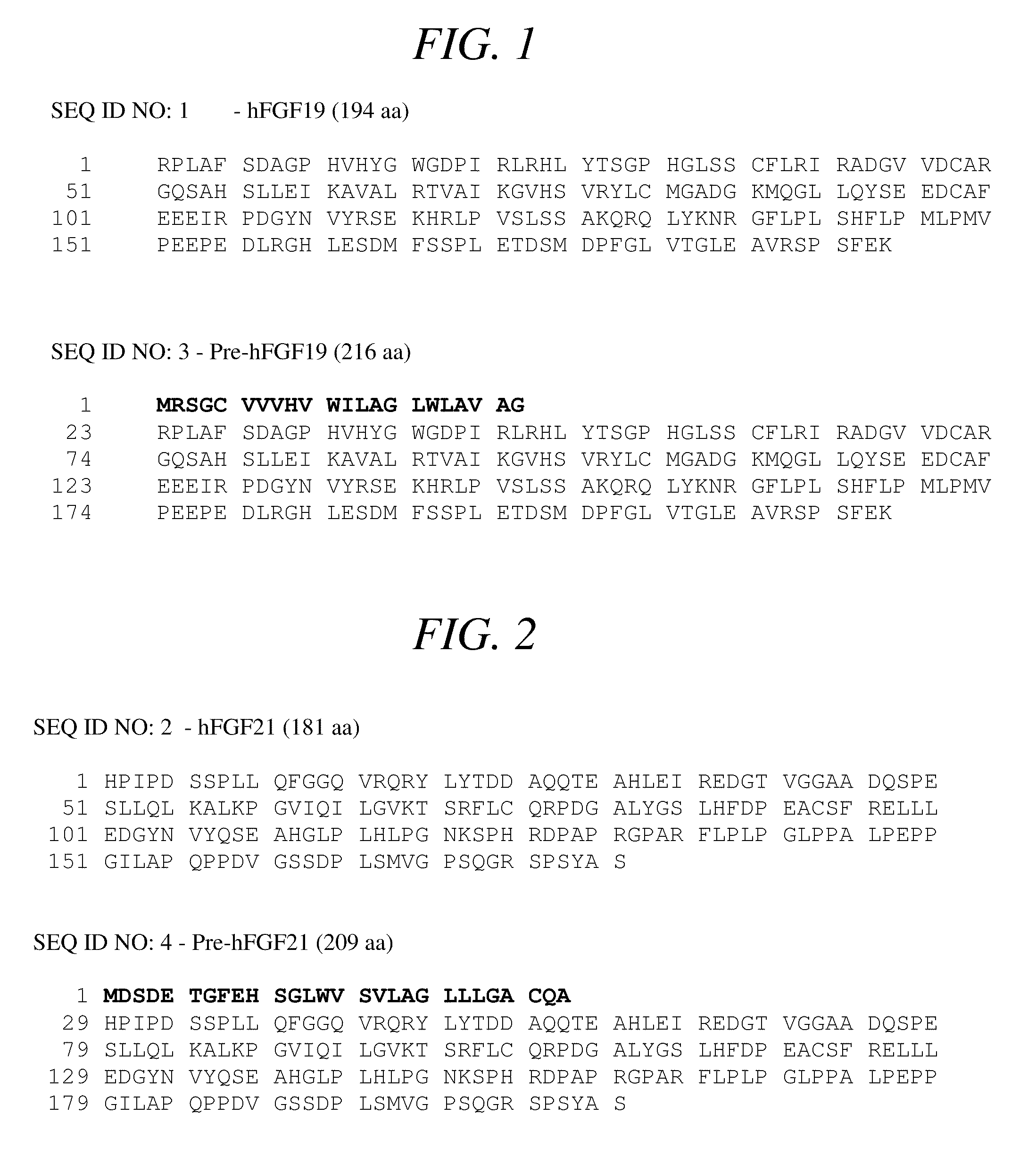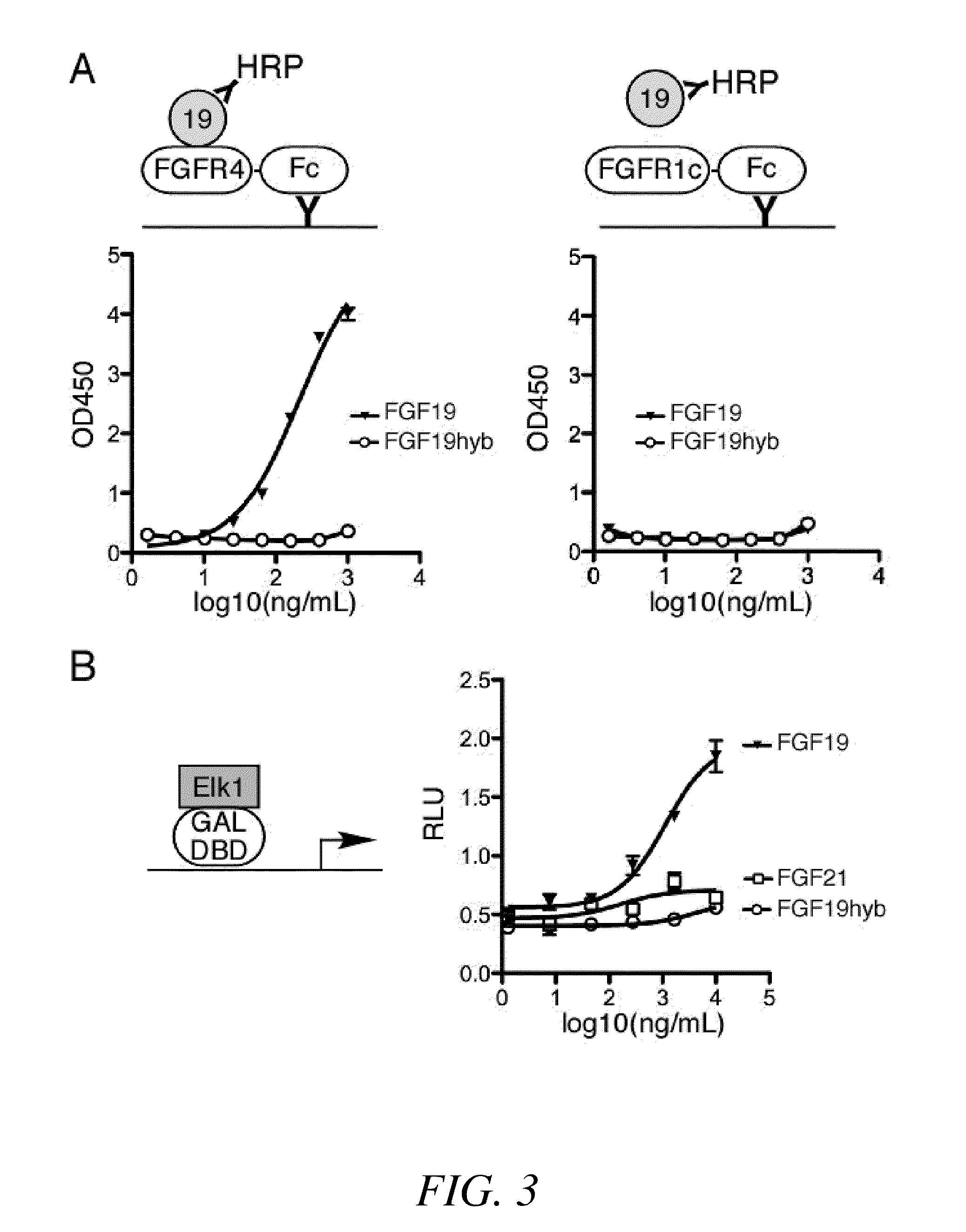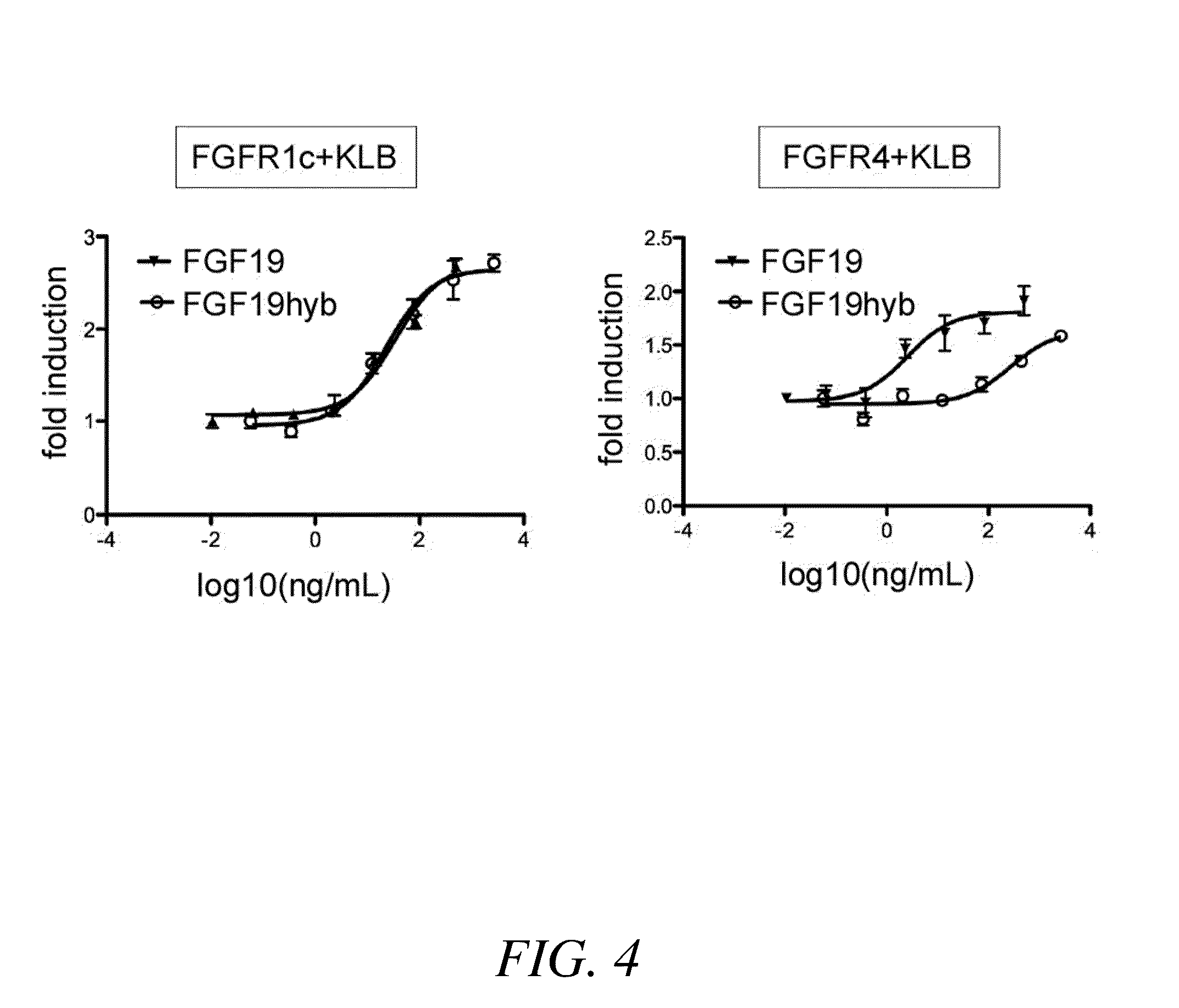Chimeric fibroblast growth factors with altered receptor specificity
a growth factor and receptor specificity technology, applied in the field of new polypeptides, can solve the problem of no efficient signaling result from the binding of fgf21 to fgfr4, and achieve the effect of reducing individual lean mass, and reducing individual bone density
- Summary
- Abstract
- Description
- Claims
- Application Information
AI Technical Summary
Benefits of technology
Problems solved by technology
Method used
Image
Examples
example 1
KLB-Independent FGFR Binding Activity of Chimeric and Native FGF Polypeptides
[0283]The in vitro FGF receptor-binding activity of a chimeric FGF polypeptide of the present invention was measured using an enzyme-linked immunosorbent assay (ELISA). Referring to FIG. 3A (top), a schematic diagram of the ELISA for measuring FGF receptor (FGFR) in vitro binding activity and its corresponding control are depicted.
[0284]Monoclonal antibodies specific for human IgG-Fc fragment (Jackson ImmunoResearch, West Grove, Pa., USA) were immobilized in the wells of Maxisorp™ flat-bottom 96-well plates (Nunc, Thermo Fisher Scientific, Rochester, N.Y.) by overnight incubation with 100 μl per well of 2 μg / ml antibody solution. Each well was then incubated with either 1 μg / ml of FGFR4—Fc (a recombinant polypeptide comprising a human FGFR4 extracellular domain fused to a human IgG1 Fc fragment; catalog no. 685-FR-050, R&D Systems, Inc., Minneapolis, Minn.) or 1 μg / ml FGFR1c-Fc (a recombinant polypeptide co...
example 2
KLB-Dependent FGFR4Binding Activity of Chimeric and Native FGF Polypeptides
[0291]In this assay, rat L6 myoblasts in a 96-well plate were transiently-transfected with an expression vector encoding either human FGFR4 polypeptide (based on NCBI Reference Sequence: NM—002011.3) or human FGFR1c polypeptide (based on NCBI Reference Sequence: NM—015850.3), an expression vector encoding Klotho-beta (KLB) polypeptide (based on NCBI Reference Sequence: NM—175737.3 fused to a C-terminal LEDYKDDDDK epitope sequence), an expression vector encoding a GAL4-Elk-1 transcriptional activator (pFA2-Elk1, Stratagene), and an expression vector encoding a firefly luciferase reporter gene under control of the yeast GAL4 upstream activator (pFR-luc, Stratagene). A vector for the constitutive expression of Renilla luciferase (pRL-SV40, Promega) was also transfected into the cells. Transfections were performed using FuGENE HD Transfection Reagent (Roche Applied Science) in accordance with the manufacturer's i...
example 3
Induction of Liver-Specific Genes by Chimeric and Native FGF Polypeptides
[0294]In this example, FVB mice were fasted overnight. A sample group (n=5 or 6) of fasted mice was injected via tail vein with native human FGF19-Flag polypeptide (FGF19-Flag in Table 10, native human FGF21-His polypeptide (FGF21-His in Table 10), chimeric FGF19-Flag polypeptide (cFGF21 / 19-2 / Flag in Table 10; SEQ ID NO:242) or phosphate-buffer saline (PBS) vehicle control. The polypeptides were provided in PBS at a dosage of 1 mg / kg. At 4 hours post-injection, liver tissue was harvested from each mouse and snap-frozen in liquid nitrogen. Total tissue RNA was isolated from the harvested liver tissue using Qiazol (catalog no. 79306, Qiagen, Germantown, Md.) and used as a template for cDNA synthesis (Quantitect Reverse Transcription Kit, catalog no. 205311, Qiagen). Following standard protocols for quantitative real-time PCR, the cDNA was quantified using SYBR Green dye (catalog no. 11760500, Invitrogen, Carlsbad...
PUM
| Property | Measurement | Unit |
|---|---|---|
| concentrations | aaaaa | aaaaa |
| concentrations | aaaaa | aaaaa |
| concentrations | aaaaa | aaaaa |
Abstract
Description
Claims
Application Information
 Login to View More
Login to View More - R&D
- Intellectual Property
- Life Sciences
- Materials
- Tech Scout
- Unparalleled Data Quality
- Higher Quality Content
- 60% Fewer Hallucinations
Browse by: Latest US Patents, China's latest patents, Technical Efficacy Thesaurus, Application Domain, Technology Topic, Popular Technical Reports.
© 2025 PatSnap. All rights reserved.Legal|Privacy policy|Modern Slavery Act Transparency Statement|Sitemap|About US| Contact US: help@patsnap.com



